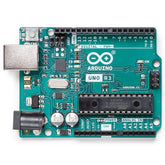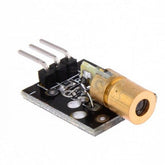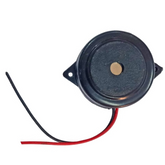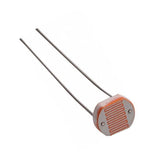Smart Security System
Summary
Discover the power of Smart Security Systems in this captivating blog post. We delve into what exactly these systems are, their numerous advantages, and the essential requirements needed for their implementation. Get ready to unravel the intricate workings of these cutting-edge systems, including how they seamlessly integrate various devices to provide foolproof protection. Additionally, we explore the exciting process of building a prototype and even share a code snippet to help you understand their inner workings. Prepare to embrace a safer future with the ultimate blend of technology and security.
What is smart security system?
A smart security system's main purpose is to offer complete and efficient security solutions that can protect people, property, and assets from potential threats. Traditional or conventional security measures like alarms, locks, and CCTV cameras frequently have low levels of efficiency and are simple to disable. Where as, smart security systems are intended to offer a considerably better level of protection by utilizing smart and enticing technologies and clever algorithms to identify and address potential threats. Numerous environments, including homes, businesses, public areas, and industrial sites, can have these systems specifically curated to match their unique requirements.
read more : What is Arduino Nano
Advantages of the system
One of the main features of this system is that it can offer real-time monitoring and reaction capabilities. They may identify, respond and react to potential dangers spontaneously in real time, even when the user is not present nearby, by integrating the latest sensors, cameras, and other monitoring equipment. This involves everything from environmental monitoring and biometric verification to motion detection and facial recognition. To offer a smooth and highly effective cum efficient protection solution, smart security systems are combined with other technologies, such as smart lighting and climate management. These systems also have the advantage of being able to change themselves and improve over time. These systems can analyze data and trends to spot possible dangers and then decide how to respond by the influence of artificial intelligence and machine learning techniques. This may involve anything from automatically changing the lighting, camera angles, pixel setting to sending security guards or emergency services to the needy.
read more : What is the microcontroller used in Arduino UNO?
Requirements of the system
A smart security system requires a wide range of components to provide comprehensive protection against potential threats. Some of the key components and their roles are:
Cameras:
One of a smart security system's most crucial components is cameras. Real-time monitoring capabilities are available, and they can record footage of prospective dangers. From basic CCTV cameras to sophisticated 360-degree and infrared imaging cameras, cameras come in all shapes and sizes.
Sensors:
A variety of possible dangers, including as motion, sound, and changes in temperature or humidity, can be detected by sensors. When threats are found, they can be used to activate alarms or other security measures. Door and window sensors: These sensors can detect when doors or windows are opened or closed and can trigger alarms or other security measures in response.
Access control systems:
These systems, which range from conventional key-based systems to advanced biometric authentication systems, can be utilized to restrict access to specific locations, such as buildings, rooms, offices etc.
Alarms:
Any security system must include alarms. They are susceptible to a variety of potential hazards and, if necessary, can notify security staff or emergency services in order to prevent any harm to the institution/organization.
Monitoring and response systems:
These systems are meant to offer real-time monitoring and response features. They range from manually operated security stations to automated response systems that can send security personnel or emergency services when potential threats are identified in order to rescue the assets.
Networking and connectivity:
They are essential components of any security system be in traditional or smart systems. These are used to connect cameras, sensors, and other devices to any system and can make it possible to observe and react in real time.
A sophisticated security system has numerous components in order to offer total defence against potential threats. These systems are able to provide a highly effective and all-encompassing security solution for residences, businesses, public spaces, and industrial sites by integrating real-time monitoring and reaction features with contemporary technology including cameras, sensors, access control systems, and alarms.
read our blog about Smart Dustbin using Arduino, covers the hardware required, working principle, circuit diagram, and includes the smart dustbin code for the project.
Detailed working of the system
The system normally consists of a variety of parts that cooperate to identify possible threats and launch the proper defenses, such as cameras, sensors, access control systems, alarms, networking and communication systems, etc.
The system's cameras are significant part of the components involved, providing a visual feed that can be used to monitor activity in real-time. Cameras can be connected to the system's networking and connectivity systems, enabling footage to be accessed remotely and allowing security personnel to respond to potential threats quickly and effectively.
By identifying possible threats in real-time and setting off alarms or other security measures as needed, sensors are essential to the smart security system. For instance, sound sensors can detect the sound of breaking glass or other suspicious noises and launch a response, while motion sensors can detect movement in a protected area and set off an alarm.
Another essential element of a smart security system is access control systems. These systems, which range from conventional key-based systems to cutting-edge biometric authentication systems, can restrict access to particular locations, such as buildings or rooms. Security staff may monitor access in real-time and take appropriate action in response to potential threats thanks to the integration of access control systems with the system's cameras and sensors.
When any type of threat or harm is identified, the system needs alarms to notify security staff or emergency services. A variety of possible hazards, such as motion, sound, and changes in temperature or humidity, might set off alarms.
In order for cameras, sensors, and other devices to interact with one another as well as with remote monitoring and reaction centres, the system's networking and communication systems are also essential. Systems for networking and communication can range from conventional wired networks to cutting-edge wireless ones, giving security staff real-time access to security feeds and allowing them to react to possible threats swiftly and effectively
read more : Exploring LCD Displays and Arduino UNO
Building a prototype
Components required:
- ESP32 or Arduino UNO Board
- Laser Diode Module KY-008
- Buzzer
- LDR
- Resistors (10k)
- Push Button Switch
- Bread Board
- Jumper wires
Circuit diagram

Code:
int laserPin = 3;
// for ESP32
//int sensorPin = 35;
// for Arduino UNO
int sensorPin = A0;
int buttonPin = 12;
int buzzerPin = 11;
int laserThreshold = 10;
void setup() {
pinMode(laserPin, OUTPUT);
pinMode(buttonPin, INPUT_PULLUP);
Serial.begin(9600);
}
boolean alarmState = false;
void loop() {
if (! alarmState) {
delay(1000);
digitalWrite(laserPin, HIGH);
delay(10);
unsigned long startTime = millis();
while (millis() - startTime < 1000) {
int sensorValue = analogRead(sensorPin);
Serial.println(sensorValue);
if (sensorValue > laserThreshold) {
alarmState = true;
break;
}
delay(10);
}
digitalWrite(laserPin, LOW);
} else {
tone(buzzerPin, 440);
if (! digitalRead(buttonPin)) {
alarmState = false;
noTone(buzzerPin);
}
delay(10);
}
}
Working
A laser diode module and an LDR (Light Dependent Resistor) are used in the laser security system using an ESP32 or Arduino UNO board to detect any entry into a secured area. The laser beam is broken when an intrusion occurs, and the mechanism activates an alarm via buzzing. A push-button switch can be used to arm and disarm the system. Here's how the system works:
- A light beam is released by the laser diode module and travels across the enclosed space.
- The LDR measures the intensity of the light that strikes it. The LDR's resistance rises as a result of the laser beam being cut off since less light is falling on it.
- The ESP32 or Arduino UNO board detects the increase in resistance, due to which the buzzer buzzes.
- The system can be armed and disarmed using the push-button switch. Any break in the laser beam will set off the alarm when the system is in the armed state. The alarm won't go off when the system is disarmed.
- The system can be improved even further by including extra sensors, like a camera or motion sensor, to offer more thorough security coverage.
read our blog explaining the arduino smart dustbin, a step-by-step guide on creating an efficient waste management solution. Learn how Arduino, ultrasonic sensors, and a servo motor can revolutionize your approach to waste disposal.
Conclusion
In comparison to any form of conventional security system, a smart security system provides us with a noteworthy level of security that is also more effective, dependable, and practical. These systems offer intelligent and responsive security solutions with the use of cutting-edge technology like artificial intelligence, machine learning, and the Internet of Things, which can be altered and customized to suit the requirements of any home or enterprise. They enable real-time warnings, remote monitoring, and control, as well as seamless connection with other smart home gadgets. These technologies also provide improved privacy and defense against online attacks without compromising security. The demand for sophisticated security solutions will only increase as technology develops and security dangers become more complex. Therefore, investing in a smart security system is always a wise decision that can protect your valuable assets and save you from potential threats and dangers that could have landed you in the pool of loses. A smart security system is a smart investment that can provide you with the highest possible level of protection and convenience for your assets.
If you appreciate our work don't forget to share this post and leave your opinion in the comment box.
Please do check out other blog posts about Popular electronics
Make sure you check out our wide range of products and collections (we offer some exciting deals!)
Frequently Asked Questions
1. Can lasers be used for security?
Yes, laser security systems use lasers to create a beam that will be broken when someone tries to cross it, triggering an alarm. They can be used for home security and perimeter protection. Most laser systems now use invisible lasers, so the unwanted person entering the home will not know that there is a laser in place.
read more : How do I Power my Arduino?
2. How to make a laser security system using Arduino?
There are several ways to make a laser security system using Arduino. One way is to use a laser, a photoresistor, a buzzer, and an LED. When the laser beam is broken, the photoresistor detects the change in light intensity and triggers the buzzer to sound an alarm.
Here are the steps to make a simple laser security system using Arduino
- Gather the required components: LED, laser, photoresistor, piezo buzzer, resistor, and Arduino board.
- Connect the LED to pin 9 and ground (GND).
- Connect the laser to 5V and ground (GND).
- Connect the photoresistor to A0 and ground (GND) through a resistor.
- Connect the piezo buzzer to pin 8 and ground (GND).
- Write the code to detect the laser beam and trigger the alarm
3. How does a laser module work?
A laser module is an optoelectronic device that generates intense and coherent light. It operates by converting electrical energy into light energy. Specifically, a laser module utilizes a laser diode, which is a type of LED that amplifies and emits light with the assistance of reflectors.
To achieve laser oscillation, the light generated through the injection of current between two mirrors is amplified.
The photons bounce back and forth between these mirrors, stimulating other photons to emit light with the same phase and wavelength. This process results in the creation of a focused and concentrated light beam.
The laser diode, a small electronic component, is responsible for physically emitting radiation. Laser diodes employ a p-n junction similar to that of a conventional junction diode or LED to generate laser light through the interaction between electrons and photons.
read more : Difference Between Arduino and Raspberry Pi
To achieve laser oscillation, the light generated through the injection of current between two mirrors is amplified.
The photons bounce back and forth between these mirrors, stimulating other photons to emit light with the same phase and wavelength. This process results in the creation of a focused and concentrated light beam.
The laser diode, a small electronic component, is responsible for physically emitting radiation. Laser diodes employ a p-n junction similar to that of a conventional junction diode or LED to generate laser light through the interaction between electrons and photons.














